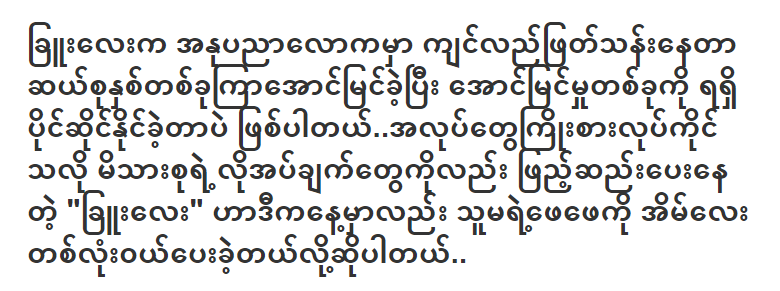








Bridging Worlds with AI
Hey there, language enthusiasts! Ever wondered how technology is revolutionizing the way we communicate across borders? Well, let me tell you, it’s all about AI breaking down those linguistic barriers. Picture this: you’re chatting with someone from halfway across the globe, and voila! You understand each other perfectly, as if you’re speaking the same language. That’s the magic of AI in language translation, my friend.
Understanding the Language Maze: Challenges Galore
Now, before we delve deeper into the wonders of AI, let’s talk about the hurdles in language translation. It’s not just about converting words from one language to another; it’s about capturing the nuances, the cultural subtleties, and the context behind every phrase. Imagine trying to translate a poem without losing its essence—talk about a Herculean task!
Enter AI: The Linguistic Magician
But fear not, for AI is here to save the day! Think of AI as the ultimate linguistic magician, waving its wand (or should I say, algorithms?) to decode languages with precision and finesse. Whether it’s translating text, speech, or even sign language, AI is like that multilingual friend who’s always got your back.
The Brain behind the Brawn: How AI Translates
Now, you might be wondering, “How on earth does AI pull off this linguistic wizardry?” Well, my curious friend, let me break it down for you. At the heart of AI translation lies machine learning—a fancy term for computers learning from data without being explicitly programmed. It’s like teaching a toddler to speak by exposing them to different languages; they pick up patterns and meanings along the way.
Cracking the Code: Machine Learning in Action
So, how does machine learning work its magic in translation? Picture this: you feed the AI system with tons of bilingual texts—say, English and French articles. The AI analyzes these texts, identifies patterns, and learns how words and phrases correspond between the two languages. It’s like a giant puzzle, with the AI piecing together the language pieces to form coherent translations.
The Power of Neural Networks: Mimicking the Human Brain
Now, let’s talk about neural networks—the backbone of AI translation. These networks are inspired by the human brain, with layers of interconnected nodes processing information. It’s like a team of brainy translators working together to decipher and reassemble sentences in different languages. Each layer adds complexity and accuracy to the translation process, making it as close to human-level understanding as possible.
From Words to Context: Contextual Awareness in Translation
But AI translation isn’t just about swapping words; it’s about understanding context. Take the word “bark,” for example. Depending on the context, it could mean the sound a dog makes or the outer covering of a tree. AI uses contextual clues—like surrounding words and phrases—to nail down the right translation. It’s like having Sherlock Holmes’s deductive skills at your linguistic disposal!
The Rise of NLP: Natural Language Processing Unleashed
Now, let’s talk about Natural Language Processing (NLP)—the secret sauce behind AI’s ability to understand human language. NLP is like the Swiss Army knife of AI, handling everything from text analysis to sentiment recognition. It’s what enables AI to not only translate words but also grasp the underlying meaning and intent behind them. Think of it as AI’s sixth sense for language.
Beyond Text: AI Breaking the Sound Barrier
But wait, there’s more! AI isn’t just limited to text translation; it’s breaking the sound barrier too. With advancements in speech recognition and synthesis, AI can now translate spoken language in real-time. It’s like having a personal interpreter in your pocket, ready to translate your words on the fly. Say goodbye to language barriers during your travels—AI has got you covered!
The Human Touch: AI and Human Collaboration
Now, you might be thinking, “Is AI going to replace human translators?” Not so fast! While AI is incredibly powerful, it still has its limitations—especially when it comes to capturing the nuances of human expression and emotion. That’s where human translators come in, adding that extra layer of finesse and cultural understanding to the mix. It’s like a tag team, with AI handling the heavy lifting and humans adding the final polish.
Looking Ahead: The Future of AI in Translation
So, what does the future hold for AI in translation? Well, the possibilities are endless! With ongoing advancements in AI and machine learning, we can expect even greater accuracy, speed, and versatility in translation. Imagine a world where language is no longer a barrier but a bridge connecting people from all walks of life. That’s the power of AI in breaking communication barriers globally.
Embracing the Linguistic Revolution
In conclusion, AI is not just a tool for translation; it’s a catalyst for global communication and understanding. By harnessing the power of AI, we can transcend linguistic boundaries and connect with one another on a deeper level. So, whether you’re chatting with a friend halfway across the world or exploring a foreign land, remember the magic of AI in breaking down those communication barriers. After all, in a world where words are currency, AI is the ultimate translator, bridging worlds and building bridges one language at a time. Cheers to the linguistic revolution!
